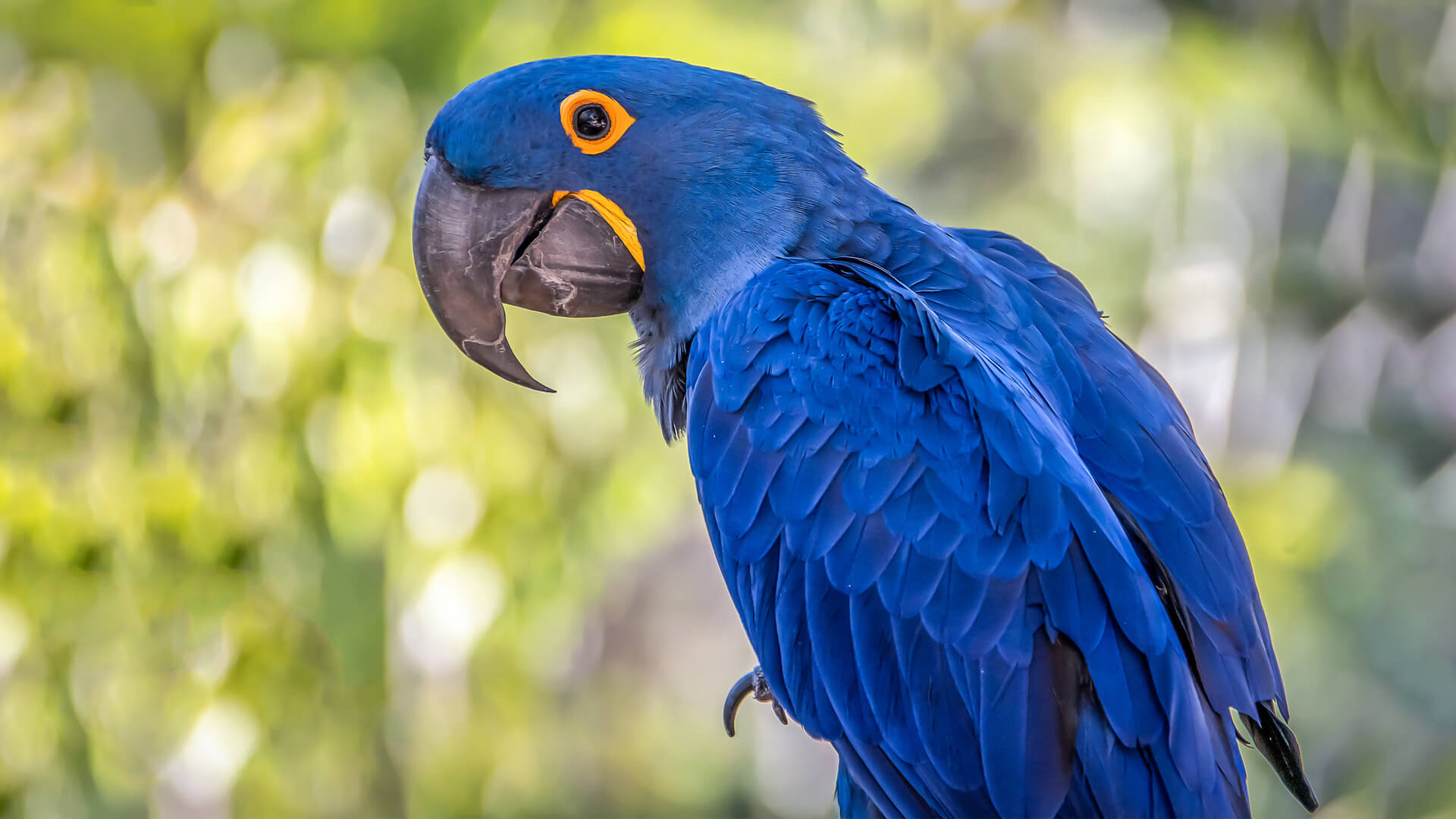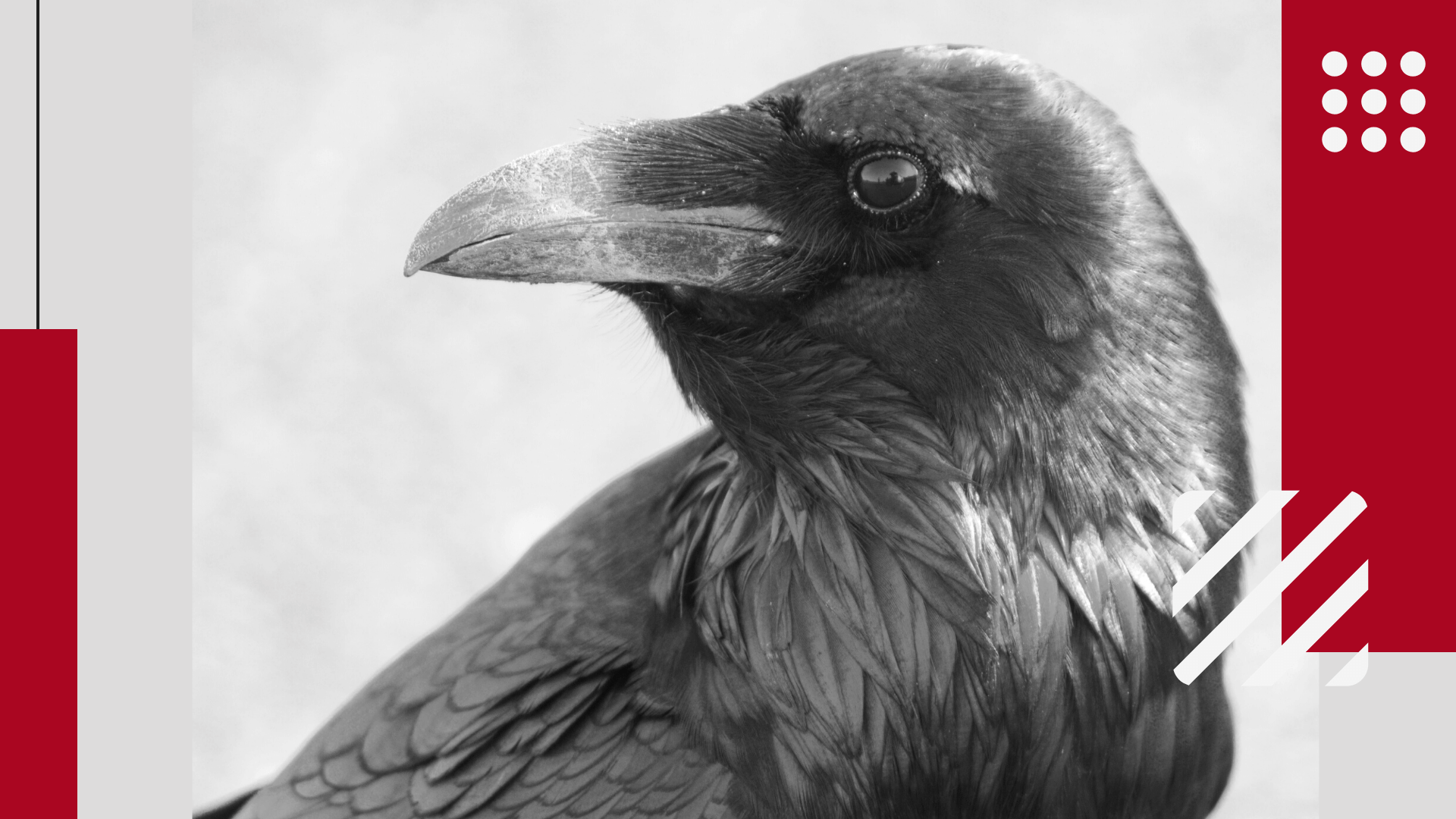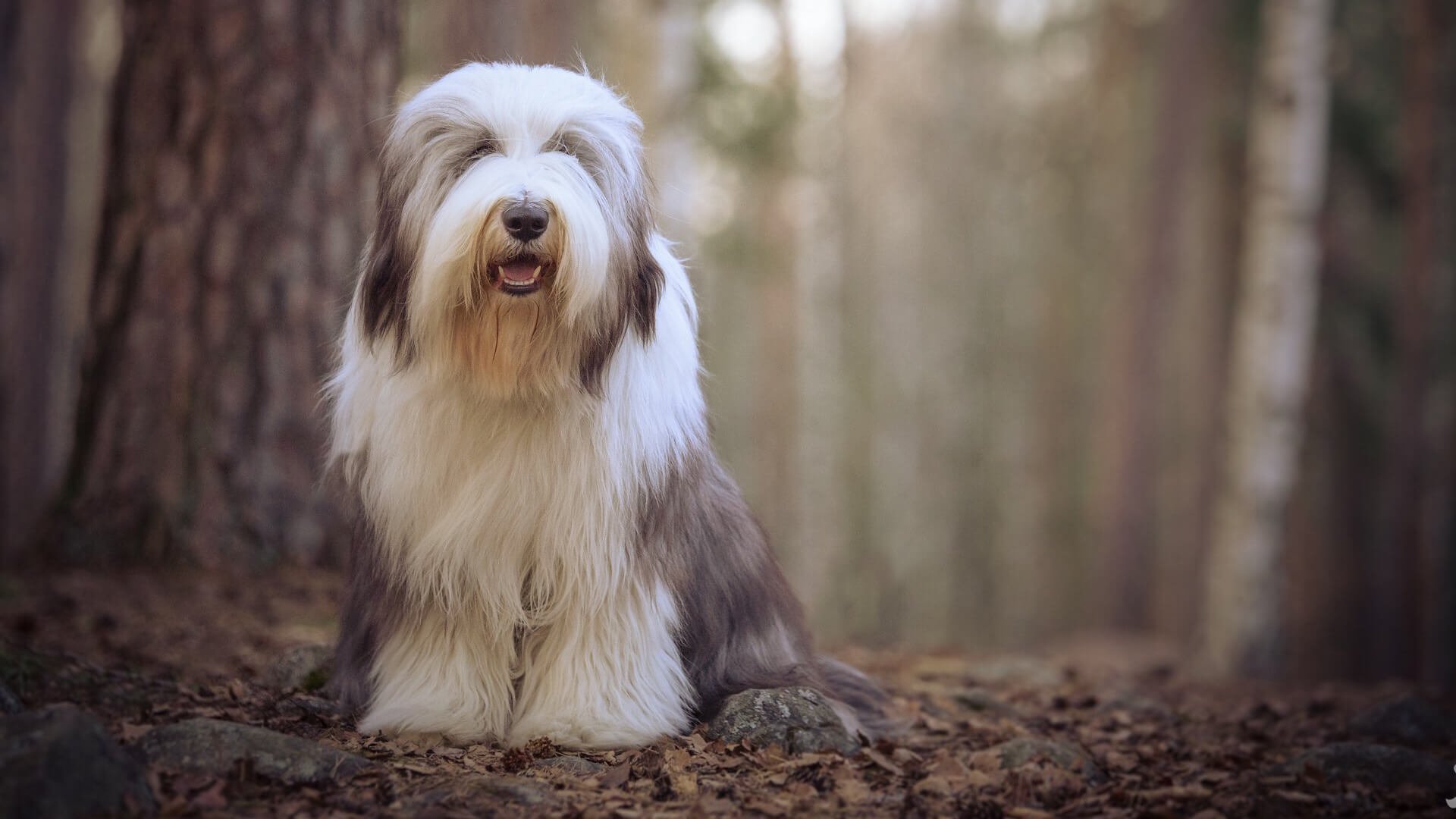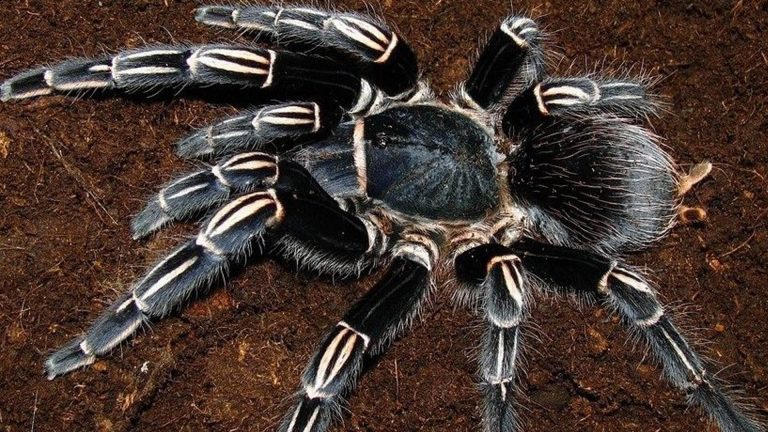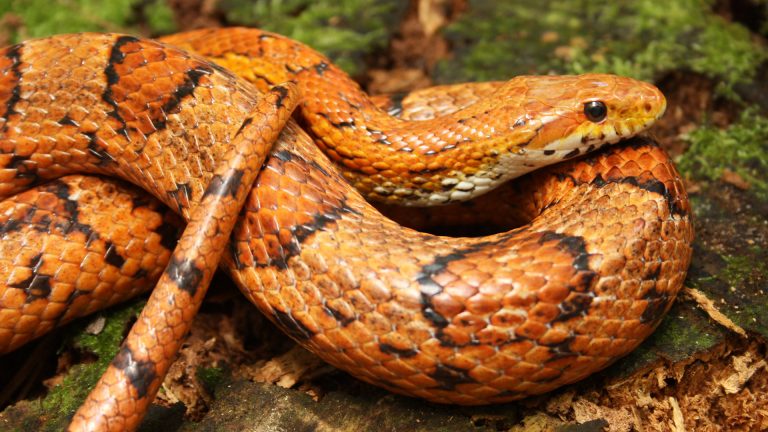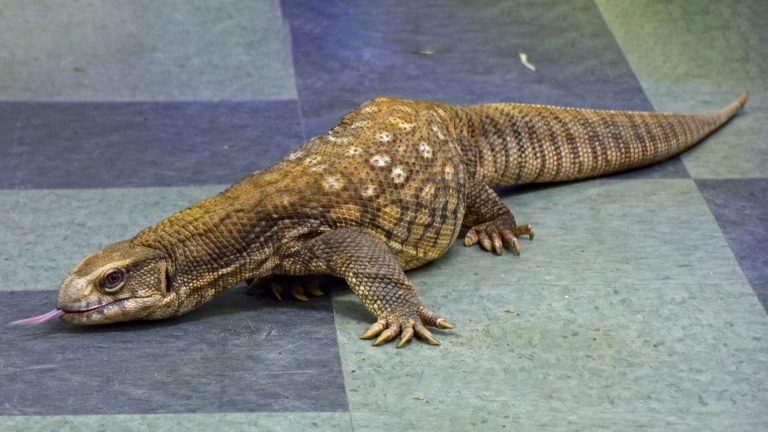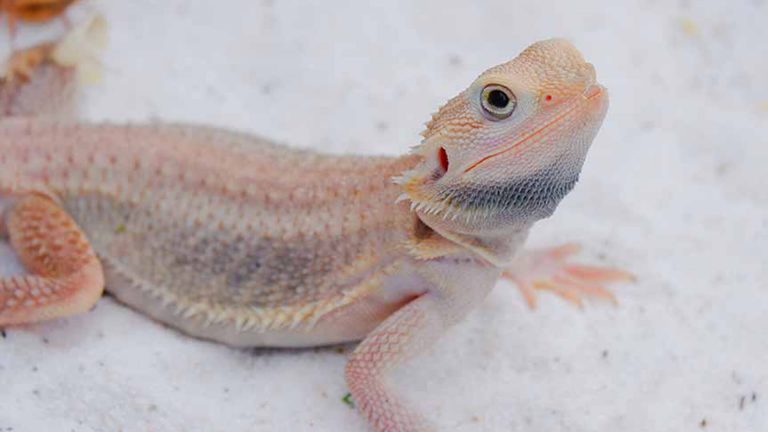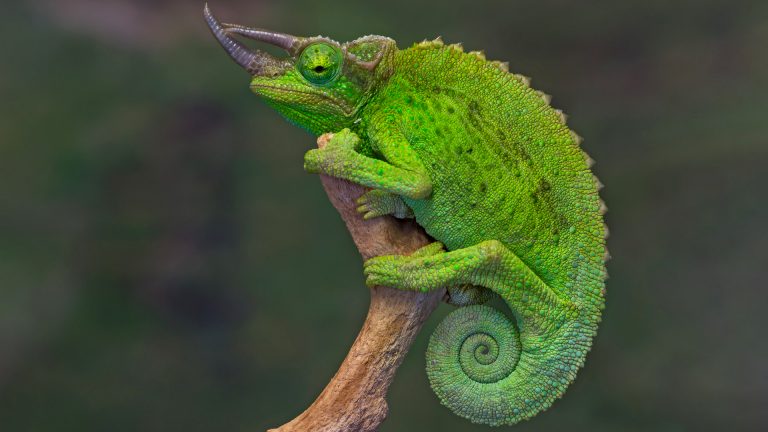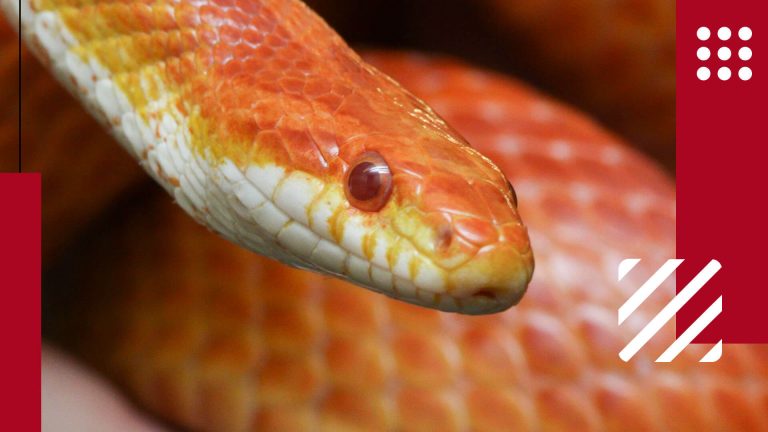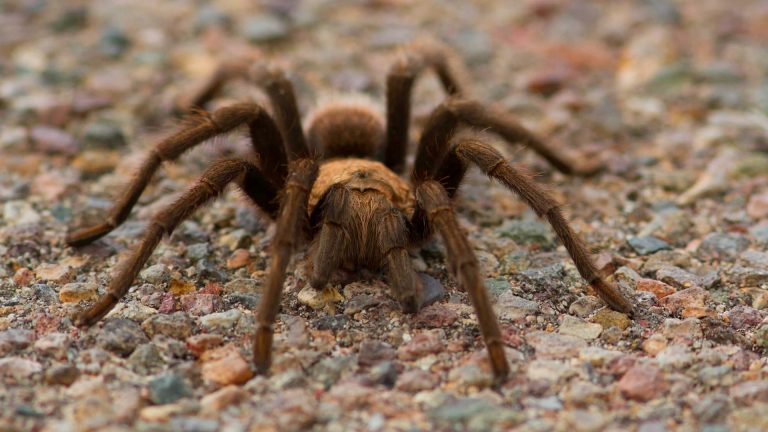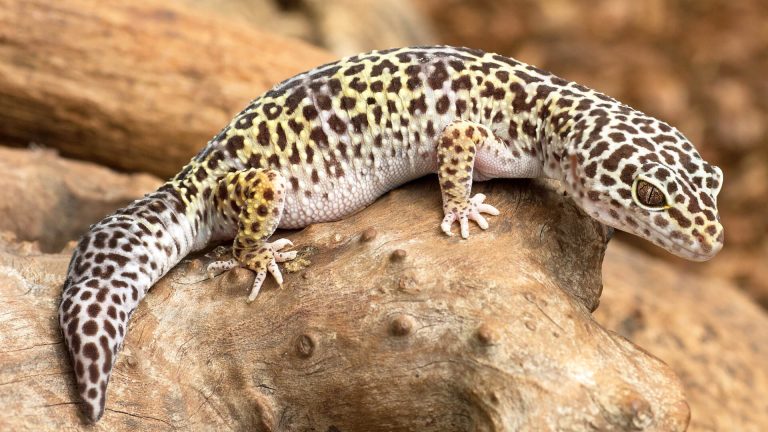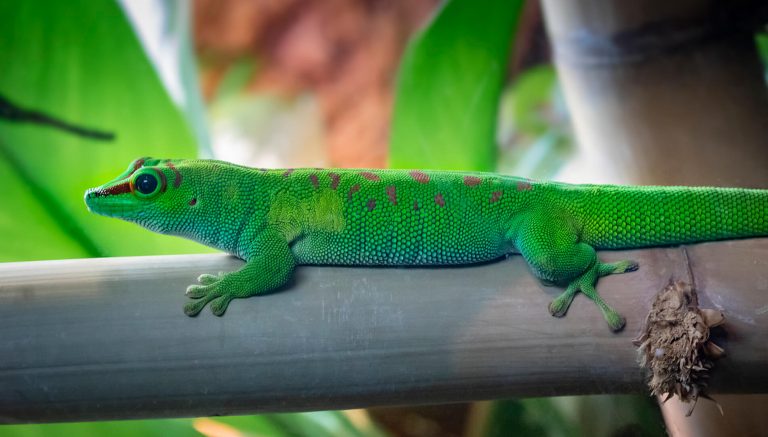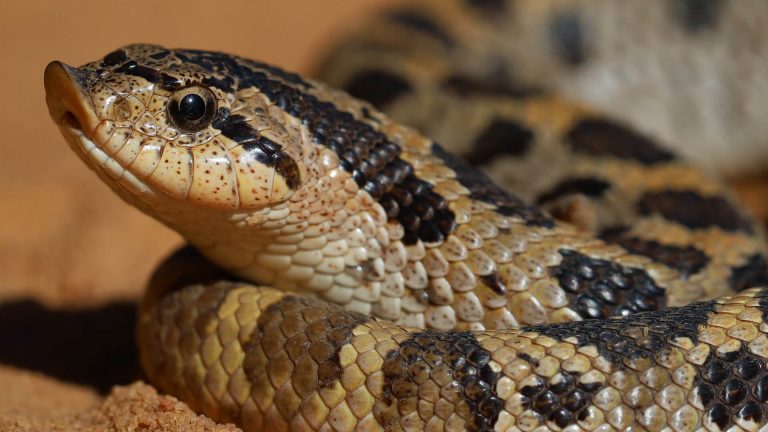Physignathus Cocincinus or the Chinese water dragon is also called Asian Thai, Green water dragon. It is an inhabitant lowland as well as the highland rainforest in Southern China and Southeast Asia. Included in this are nations like Thailand, Laos, Vietnam, Cambodia, and Burma. Most of these creatures are seen near freshwater lakes and stream grounds.
Chinese water dragons actively ascend rocks and trees. They are able swimmers and being arboreal mostly lounged on tree limbs high over the water body. If essential, the dragon can stay submerged in water for some time. Water dragon has the ability to change shades of hues from green to brown based on the temperature. Water Dragon is a very docile creature.
Distinctive Features of Chinese Water Dragon
Male Water dragons attain a length of 36 inches and the tail accounts for 70% of its total length. It helps in balancing as well as swimming. In times of danger, the tail is used as a weapon. Females are a little smaller measuring 24 inches. Hatchlings begin with a one-inch snout and 5-6 inches of total length. The color varies from dark to light green and occasionally purple. The stomach is orange-hued. The body possesses diagonal stripes of green or greenish-blue. The laterally flattened tail from the middle onwards till the last is green and white.

The lower side shows differing colors like white, off-white, light green, or light yellow. The throat tint is alluring. It can be purple, blue, or peach. The dragon throat shows a variation of single colors or strips. The head of the male dragon is bigger than the female.
The dragon has a photosensitive spot between the eyes and is called the pineal eye or third eye. This eye assists in thermo-regulation. The dragon through this can make out the difference between the light and know where to rest for basking. Moreover, the third eye helps in detecting predators. The dragon comes to wakefulness with even a little change in light at all times.
The legs of the dragon are meant to climb. The front slim legs help in gripping and lifting. The muscular back help in climbing, running, and jumping from object to object. The five long toes feet are with needle-like curves at the end claws. The owners should be careful they are not scratched which could be painful. Claws may be infested with bacteria and scratch wounds may get infected. Use gloves to handle the dragon.
Dragon is moving all through the day among trees and plants. They are diurnal. If they sense danger the dragon will jump from the tree into the water. It will either stay submerged for 90 minutes or will swim away. The humidity of 40-80% and temperature range of 26-32 degrees C are suitable for them. Dragon longevity is 10-15 years.
Sexually dragons exhibit divergent features. Males are more brightly colored compared to females. In males, the head, crests, and jowls placed on the back and neck are bigger than in females. Being aware of the sex of the dragon is vital in case you are going to keep more than one in the same cage. Two adult males will be aggressive towards one another and can give fatal injury leading to even death.
Two females are more likely to get along but they may become territorial. If multiple dragons are placed together at the same place keep one male with two or three females. If among them one is being bullied remove it to a separate place where it can live alone. Get the female sprayed at one year age if breeding is not on your mind.
All water dragon is green, to begin with, and looks like a female. By the time they are 14-16 inches in length, the males' larger head segregates them. The dragons can breed by two years of age and when they are 2 feet long. The courting behavior of the male is by physical displays like head bobbing. At the time of mating the male clamps onto the crest of the female's head. At a time females lay 6-15 eggs. The hatching time is 60-75 days.
Hatchlings at the time of birth are 1 inch beginning with a snout to vent. The complete length is 5-6 inches. The color is brown-green with a white underside. Pale strips are seen vertically laid out on either side of the body. The tail is banded and the eyes are large. Snouts are short.
Dragons frequently shed their skin. Humidity in the habitat should be maintained at the right level to facilitate the process. The dragon immerses in a big vessel as it sheds.
How to Take Care of Pet Chinese Water Dragon?
These cute little pets need good care and if you want to pet them then you should have proper knowledge of setting up habitat and their diet.
What to Feed Pet Chinese Water Dragon?
Whole prey eatables like frozen or thawed pinkie mice, feeder fish, goldfish, mealworm, cricket, and earthworm make an important part of the diet of the dragon for the juvenile as well as an adult. Include chunks of fruits and shredded vegetables mostly dark leafy green in the diet as well. The nutritive value including calcium is high.
Serve these eatables 2-3 times a week to maintain good bone structure. The dragon refuses to eat if the same food is offered every day. In good health condition, the dragon is a voracious eater. Provide calcium and vitamin D3 supplements on the food every day and vitamin-mineral supplements once a week.
How to Setup Habitat for Pet Chinese Water Dragon?
- Enclosure- Arboreal water dragon loves to climb and stay in high places. An ideal enclosure should be 6 feet high and 3-4 feet in depth. Be careful the dragon may rub its snout against the glass walls and may injure his nose and lower jaw. A larger enclosure will prevent this. Another alternative is to cover the glass walls with paper so it is not see-through. Upgrade habitat dimensions as the reptile matures.
- Substrate- Use cypress mulch as the cage substrate. It enhances tank humidity. The dragon can dig and if accidentally it falls it will not hurt itself. Sphagnum moss is also a good choice but it is costly. Coconut husk is not a good material as it may irritate the eye causing infection. Always serve food in a bowl because the dragon must not eat mulch or moss. If the intestinal blockage happens you will be spending on the vet services.
Make use of sterilized potting soil mixed with peat and sand without chemicals and vermiculite covered by sphagnum moss. It is good for humidity. A basking place of 120 degrees is suited for both juveniles and adults. - Heating and lighting- Cage temperature can be maintained through incandescent basking lights. The heat given out along with misting helps in the maintenance of humidity. As dragons are diurnal active in the day and sleep at night. So they do not need light at night. The heat source should be lightless and with a thermostat for temperature range adjustment.
The day temperature should be between 84-88 degrees F; the basking area 95-100 degrees F; the nighttime temperature should be maintained at 75-80 degrees F. Keep two thermometers to monitor the temperature. Incorrect temperature can slow the metabolism and weaken the immune system of the reptile. Ultraviolet light is a must so the dragon can absorb calcium for strong bones.
Natural sunlight is an excellent choice. You can compile an outdoor wire cage with plants and foliage for shade and shelter so the dragon is periodically in the sunlight for a short duration. Too much direct sunlight can kill the dragon. - Moisture and water- The cage humidity should be at 80% in glass and wood enclosure and glass tanks with a screen. The ventilation should also be maintained efficiently. Stagnated air will encourage mold growth.
Circulating water inside the cage enhances humidity. You can erect a small waterfall. Use spray water for misting. Dragons relish swimming and soaking. Keep a big deep pan full of water for this purpose. Water hygiene is an important task to be done frequently. Unfiltered water regions require cleanliness every day. Filtered water total change in 3-4 days. - Cage accessories- Demarcate a high basking region in the cage. Bifurcating branches and shelves inside the enclosure will help in the dragon reaching the upper end of the cage. For shelter, have artificial plants as well as green foliage. Alternatively have real plants of hibiscus, bushes like ficus, spider plant, etc.
What People Are Reading:
Health Issues of Pet Chinese Water Dragon
Some of the health issues of Chinese water dragon are:
• Gastrointestinal disease
• Metabolic bone or vitamin deficiency
• Nose rub
• Respiratory disease
• Mouth rot
• Skin infection and parasites
• Dystocia or egg binding
The healthy dragon is full of activity and is alert about its surroundings. The eyes are bright. The body and tail are filled. There is a sheen on the skin. The nose and vent are clear. The dragon eats regularly.
How it's Like to Keep Chinese Water Dragon as a Pet?
The dragon can make appealing pets because of its smaller size and social nature. Dragon relish being handled. They have particular care requirements which must be fulfilled so they bloom. They live well in captivity in pairs as well as groups.
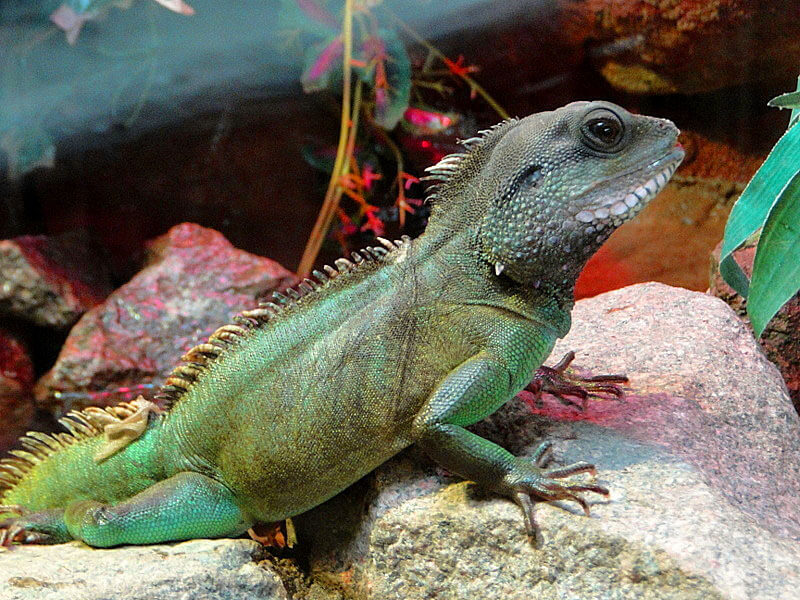
Juveniles right from a young age get accustomed to human interaction. As adults, the owner may encounter some difficulties in handling. If socialization is not proper the dragon may even bite the owner. Regular handling is necessary as this subsides aggressive behavior. They are easy to tame. The dragon as a pet should be kept by those with an intermediate level of experience.
The dragon sometimes fights with each other. This is for competing for superiority with cage mates. However, they are seldom aggressive towards the owners. In this case, a scared dragon may give an open-mouthed threat or a light tail whip when gathered. In some scary situations, they may change color or hide behind a plant or water or may make a hurried exit.
If you happen to buy wild-caught dragons the likelihood of intestinal parasites or bacterial, fungal, infection is high. This is contagious to humans. Wash your hands nicely after you handle them. They may also have open wounds, scabs, and scars. Get them treated by a good vet. The captive-born dragon babies are less likely to be infected. But these are more expensive than wild-caught dragons.
Set up the enclosure before you bring the dragon home. The reptile adjustment to new surroundings will be better. Do not handle the dragon for a month. If the reptile gets stressed it will stop eating. The best approach is to feed the dragon from the palm of your hand. As the reptile approaches the food, wait and if it needs assistance calmly lift it from beneath and place it in your palm. If it runs away do not be discourage and let it go. Try at the next meal. Gradually trust will develop.
When the dragon shows aggressive behavior it puffs up the throat, bounces up and down, and chases. This is their way of communication.
Frequently Asked Questions About Chinese Water Dragon
Some of the frequently asked questions related to Chinese Water Dragon can be found below:
Can water dragons climb glass?
Dragons are arboreal which means they climb and like to be up high. Make enclosure out of glass or wood.
Can a water dragon jump?
Dragon has sturdy muscular legs that assist in jumping and climbing
Will a water dragon's tail grow back?
The dragon can regenerate if segregated due to any cause like accident or injury. Moreover, regenerated tails will grow again if severed.
Why is my water dragon not eating?
If the tank temperatures are very low or high or else humidity is very low or the dragon is experiencing stress or sickness, its diet goes down.
Why is the Chinese water dragon digging?
Mostly pregnant dragons dig before laying eggs. The depth of the nest is 5-10 inches. Another cause could be restricted abode and the dragon wishes to escape.

